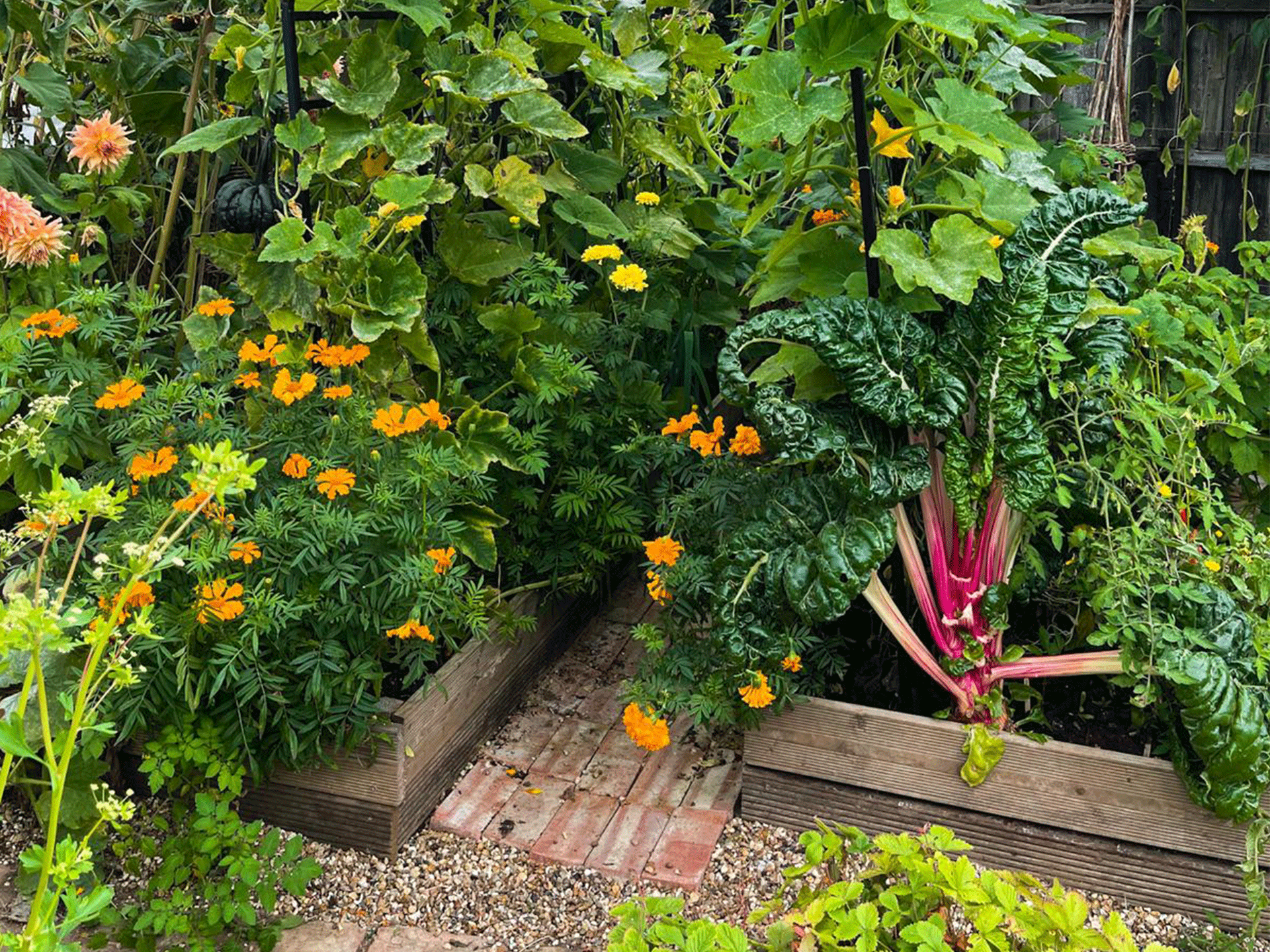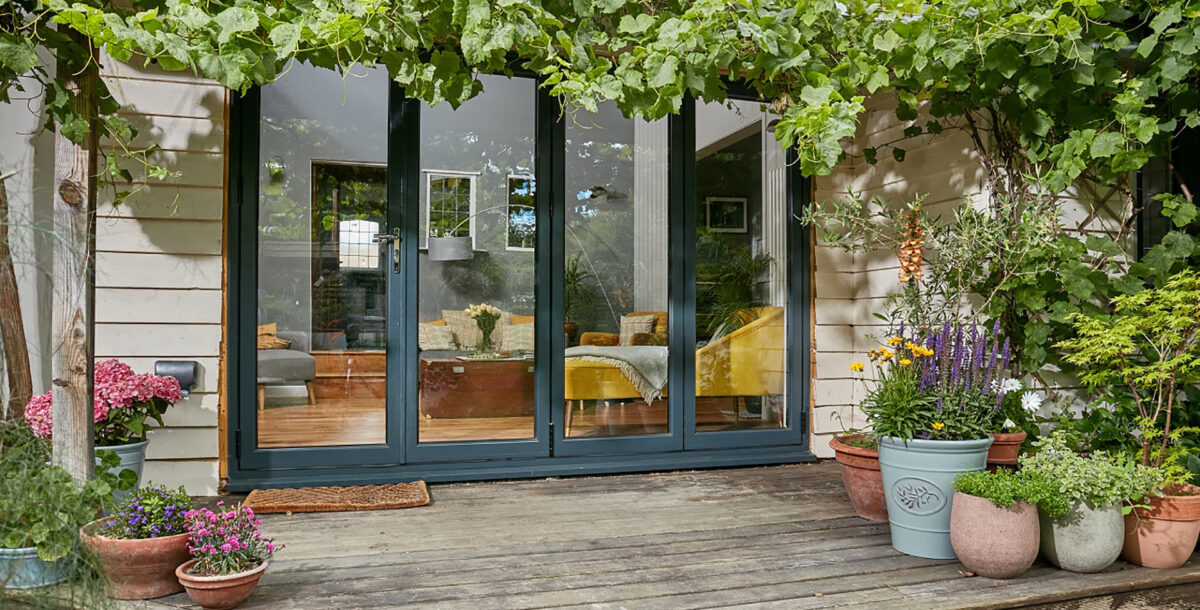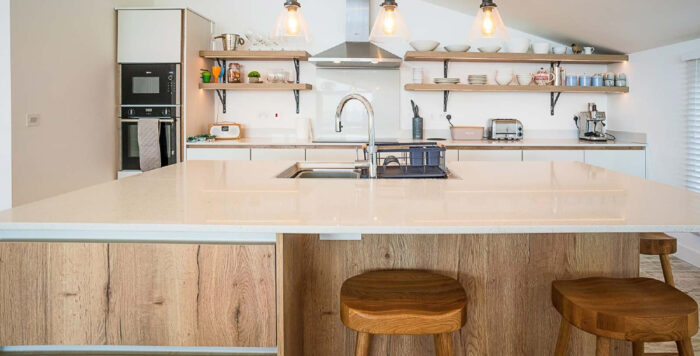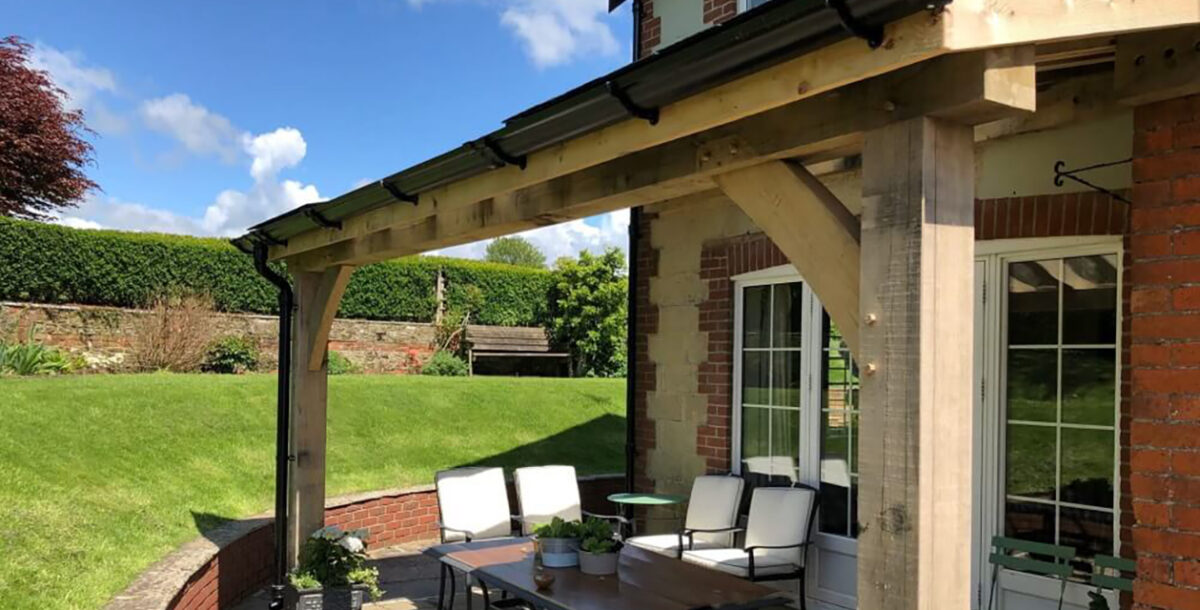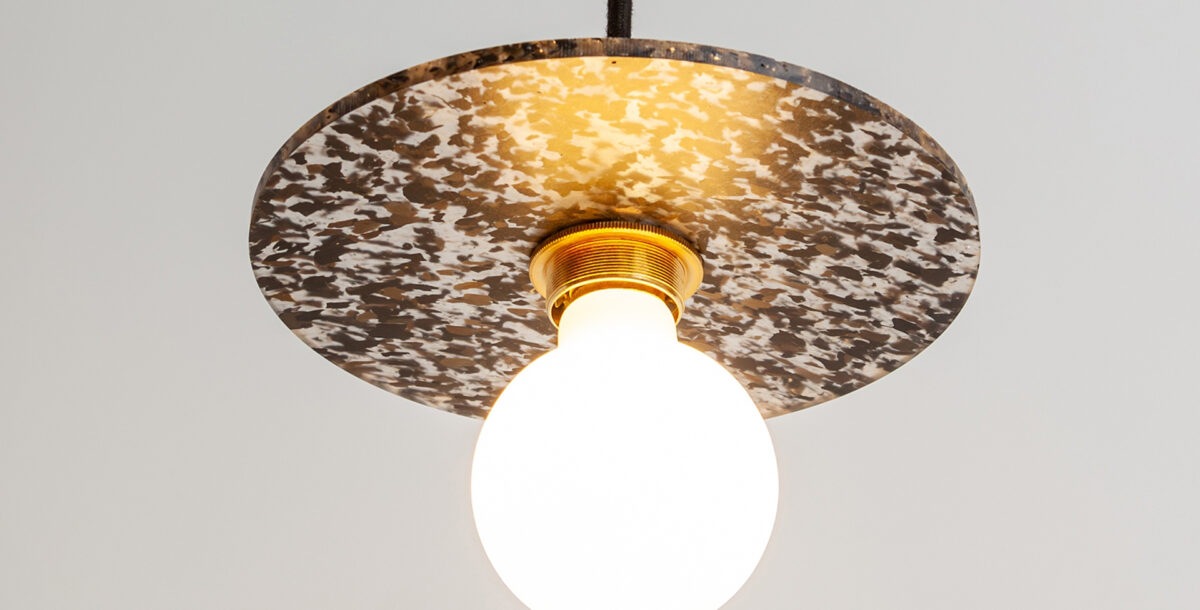How to design an edimental garden
A portmanteau of edible and ornamental, an edimental garden is a place of creativity, joy, and beauty. It's a sustainable way of planting and enjoying delicious produce and aesthetic appeal.
Coined by the horticulturalist Stephen Barstow, an edimental garden is a portmanteau of edi (edible) and mental (ornamental). And while the concept of edimentals is far from new, and the techniques are rooted in traditional practice (it’s been documented everywhere from ancient Egyptian temple gardens to European medieval ‘potager’ gardens) there’s been a rise in its popularity in recent years, thanks to more awareness of its myriad of benefits for delicious produce, aesthetic appeal, and the environment.
Grand Designs spoke to four experts in the edible planting world RHS Wisley Garden Manager Sheila Das, Lucy and Kate from heirloom seed company She Grows Veg, Gardena ambassador, Sunday Times best-selling author and grow your own expert Huw Richards and permiculture designer Jack Hodgson of the brilliant Jack’s Patch to get the lowdown on the joy and beauty of an edimental garden, how to get started, what to plant for the greatest benefits. Plus, their tips and tricks on how to maintain an edimental garden.
How did edimental planting come about?
“The advent of the edimental movement in gardening began a number of years ago when garden designers at events such as RHS Chelsea Flower Show started to use edibles in the mix of the planting in their designs alongside traditional ornamental plants,” explains She Grows Veg. “Rightly, they recognised that edibles such as veg plants and fruit trees are beautiful in their own right and absolutely have a place in peoples gardens.”
“When this first came about, edimentals were used fairly minimally and there weren’t a huge number of edible varieties used. As time has gone on it has been wonderful to see more unusual edibles featured and a break from the commonly grown varieties. We at She Grows Veg created the first fully edimental garden at BBC Gardeners’ World Live in 2023, where every single plant in the scheme could be eaten in some way, yet we had presented it in the style of a stunning ornamental garden”.
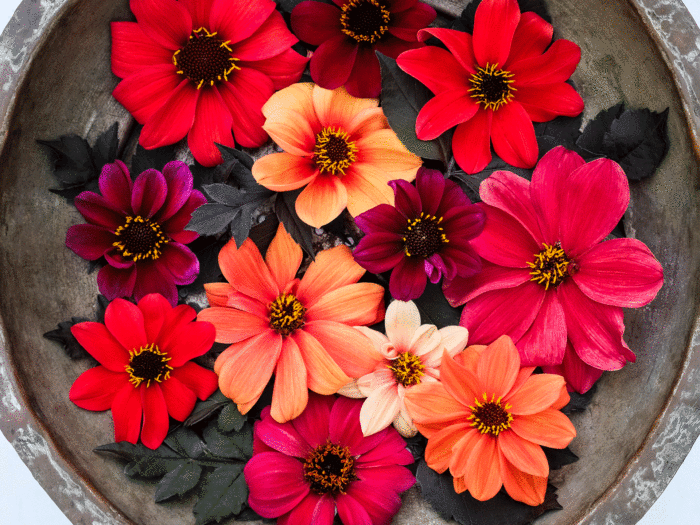
Image credit: She Grows Veg – “Dahlias were originally introduced as a food crop rather than an ornamental”
What are the benefits of an edimental garden?
Sheila Das explains, “Many plants that are beautiful to us are also edible. This means we can relax, enjoy the beauty, and eat in our garden space. If we use perennial edible plants (as opposed to the usual annual vegetables that we typically think of), this means we are nurturing a long-living ecosystem that also supports biodiversity, and the nature of many perennials being intrinsically ‘no dig‘ results in us allowing the soil’s microbiome to thrive too. This, in turn, feeds the plants that feed us as we forage in our garden to eat. The added diversity in our diets that such plants provide also has a hugely beneficial outcome for the health of our gut microbiome and therefore our continued wellness.”
Huw Richards re-iterates this, saying, “One of the best things about growing your own food is you get to choose what varieties and flavours you wish to grow, as well as knowing exactly where that food has come from. Gardening should also be about having fun and creating a space in which you want to spend time. I use various edimentals to add different colours, textures, and structure to my kitchen garden, these plants are low-maintenance and provide both beauty and consistent access to nutritious food.”
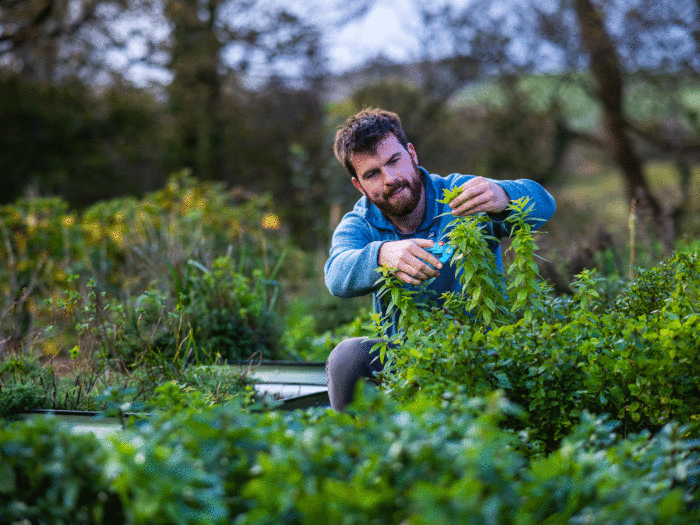
Image credit: Huw Richards in his kitchen garden
Jack describes the diversity: “An elemental garden explodes with wildlife, and that diversity isn’t just above the ground; it’s underground, too. Different plants have roots that mine the soil at different levels, which creates more soil diversity and improves your soil health and drainage.”
He adds how there’s a lot less maintenance with an edimental garden, and how great it can be for a small garden. “Use the spaces in between for planting, for example putting annuals in between lettuce and spinach or alongside ornamental flowers. More plants equals fewer weeds because the weeds don’t need to protect the soil, as the soil is already protected by the number of roots and leaves that guard it from drying out and cracking. Also, attracting the good pests to eat the bad pests is a full-circle natural pesticide. Overall, the edimental garden is much healthier and more balanced.”
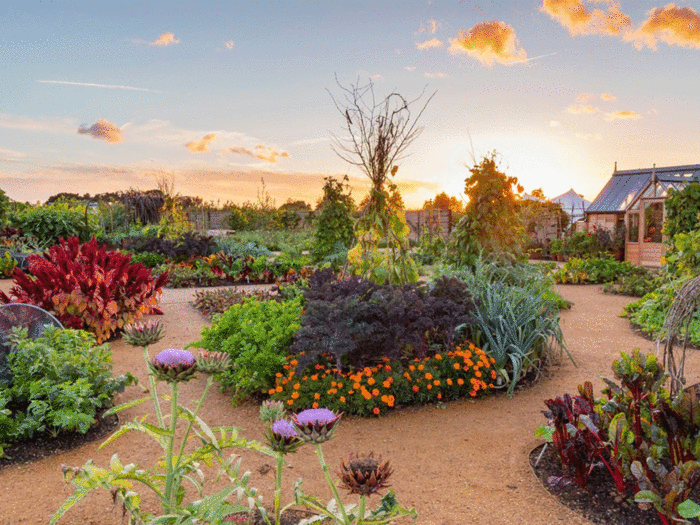
Image credit: RHS Wisley – a spectacular example of an edimental garden at The World Food Garden
Where should you start?
Kate and Lucy say, “When designing a border, you should consider height, colour, texture, and location. Work out if the site is shady or sunny, and think about the colours and look you want to achieve. Most edibles prefer sun and can cope with a little shade, but not full shade.”
Jack explains that he would “plant your ornamental plants first, so any perennial flowers, salvia, lavender, echinacea, so things that are going to be in the ground permanently, and then work the food into it. Any annuals can be put in situ after. A great mix of plants promotes more pollinators in the garden; bringing more bees, so more vegetables and adds more beauty, so it’s very aesthetic. With an edimental garden, there’s the freedom to be playful, it doesn’t have to be a mirror image and straight lines; you can mix and match. Add purples at the back of the growing space, as it draws the eye in, fire colours in the middle, and softer colours at the front, like whites.”

Image credit: Pexels/ Brett Sayle – ideal pollinators, echinacea are beautiful and easy to grow
Sheila adds that you might already have more than you think to get started: “Every garden is likely to be an edimental garden. There will undoubtedly be things you can eat in your garden, even if you don’t know it. Some may not be surprising, like dandelions and brambles, but other things will be a surprise to learn. Did you know that Hosta are edible? As are hemerocallis (day lilies), plus a species of rudbeckia. Magnolia grandiflora flower buds and the flowers of many plants, such as primula denticulata, are good additions to early-season salads. Many plants can be used to make teas, or the young foliage can be eaten in spring, such as raspberry leaf tea.”
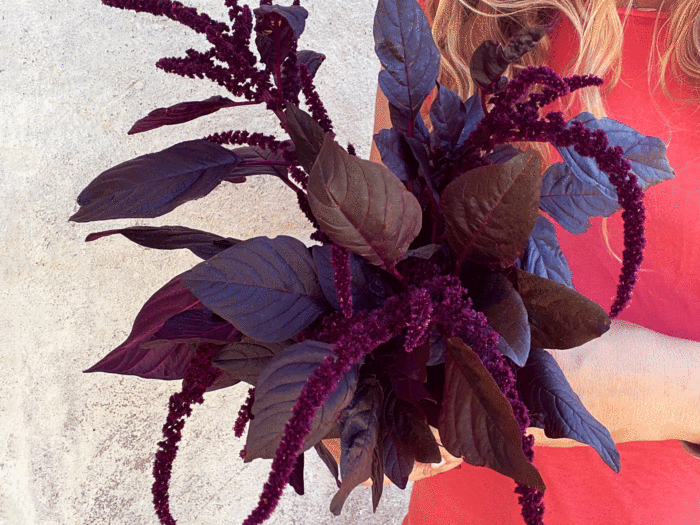
Image credit: She Grows Veg – amaranths are rich in anthocyanins known for their powerful antioxidant properties
What works well when planted together?
For Kate and Lucy, it’s all about beautiful colour combinations. “Try growing striking dark red amaranth (an edible from which you can harvest the leaves like spinach) next to the beautiful leaves from Fordhook varieties of Swiss chard. Fordhook grows tall and strong (try Fordhook giant). Use Purple artichoke plants as a large architectural presence at the back of the border. Leave any stems unharvested in situ during winter to create interest through the season and use kale plants next to flowering edibles such as roses or calendula to create structure and a beautiful green background that makes the flower colours pop.”
Huw’s current favourite aesthetic plants growing and flowering in his permaculture kitchen garden are “zinnia, sunflower, dahlia, roses, hollyhock, calendula, all of which have edible qualities. Plus, vegetables that produce gorgeous flowers like radishes, leeks, and squash. My favourite edible vegetable flower is of runner beans.”
He adds, “tree spinach, also known as glitter spinach, is an absolute must for any kitchen garden; it’s straightforward to grow, and its tips look incredible. When picking edible flowers from my garden, I use the Gardena supercut secateurs for a precise and clean cut. You can sow some edimentals now to enjoy the smaller leaves until mid-late autumn.”
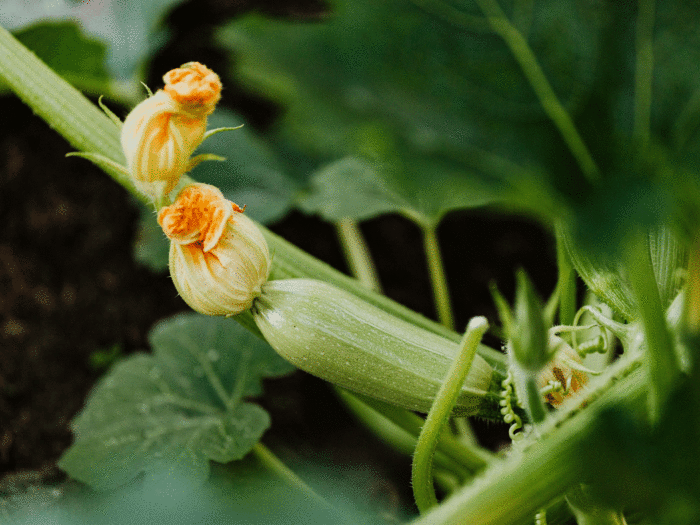
Image credit: Pexels/Karolina Grabowska – courgettes have an edible flower that is delicious
Jack recommends planting “sage and spearmint next to the brassicas to deter white cabbage moths, and nasturtiums to add beauty and practicality. Basil and tomatoes are great in companion planting, and you can add marigolds and calendula to deter aphids from attacking your tomatoes. The strong scent of the roots from marigold plants also deters cutworms and nematodes.” Jack describes his theory that “if things grow well together, they taste good together.”
Sheila adds, “Some more familiar perennial vegetables can also work well in an ornamental way. Try perennial kale in your borders—the variegated Daubenton’s is a lovely plant, and asparagus foliage works well in a border.”
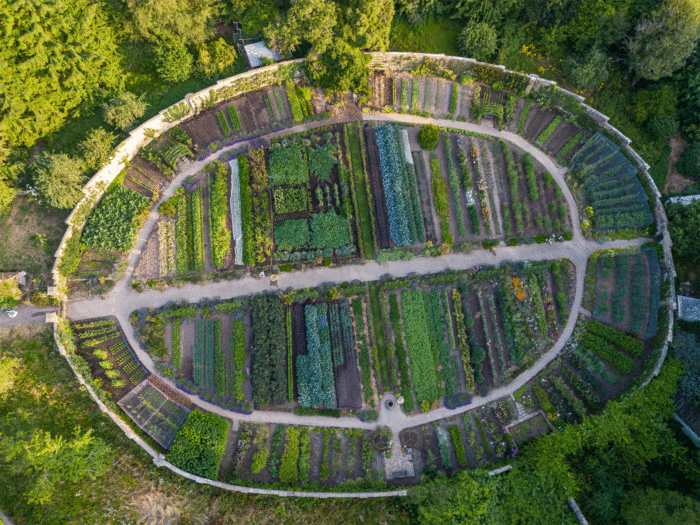
Image credit: The spectacular kitchen garden at Gravetye Manor, West Sussex
Tips and tricks from the experts on edimental planting
“Grow perennial veg so that you don’t have to regrow annual veg plants all the time,” say Kate and Lucy. “There are some exciting varieties in the heirloom edible world that you can keep on harvesting year after year. We love artichoke, spinach, onions (in particular nodding onion, which is part of the allium family and looks beautiful), Cottagers kale, plantain, dahlia, and goji berry”.

Image credit: She Grows Veg – nodding onions are deer and drought resistant
They add, “The joy of edibles is that they’re straightforward to grow from seed and will grow to a good size within months rather than the years it can take to grow an ornamental plant. Use arches to grow beautiful squashes and cucumbers; don’t be afraid to experiment. If you’re growing from seed, you’ll almost inevitably grow more than you need, so you can pop plants in to see if they thrive in situ without worrying too much, as you’ll have replacements. Also, edible harvests make wonderful gifts. If you grow too much, share the harvest with family and friends.”
Jack explains that “any tall perennials like foxglove and verbena can create a lovely natural shade for plants that don’t like being in the sun, like coriander, rocket, spinach, and lettuce” and that “if you add comfrey, you can chop and drop.” This means that when you prune the plant, you can let the leaves drop into the soil to be turned into mulch.
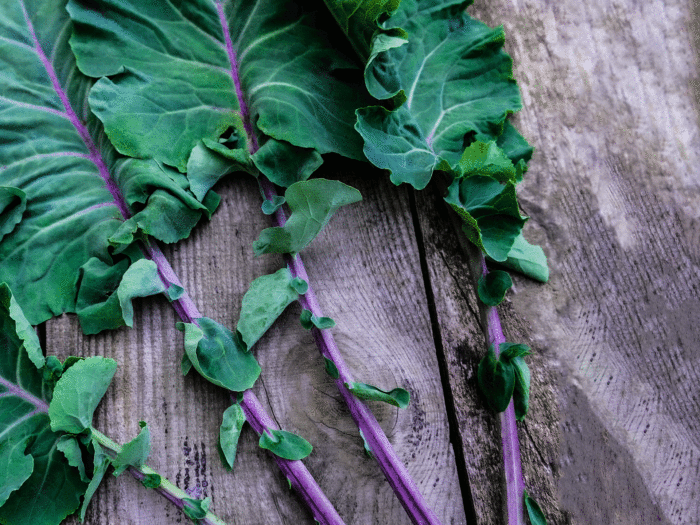
Image credit: She Grows Veg – Cottagers kale
How to maintain an edimental garden
Kate and Lucy explain that “Maintaining an edimental garden is much like an ornamental garden. Most edibles like good quality soil. We love using the ‘no-dig’ method of gardening (follow Grand Design’s no-dig gardening guide here) which is low hassle and makes your garden much easier to maintain. Grow any annual or perennial edibles from seed to save money and you’ll be sure to have an abundance of plants to pop into gaps in your borders.”
“Keep borders well weeded and tidy to give slugs fewer places to thrive. Succession sow (which means staggering your crops through the growing season) and your edible plants to give a continuous crop through the season. Sow some seeds for varieties like lettuce, chard and kale every two weeks or once a month and you’ll have a long season of eating food from your edimental garden.”

Image credit: Lucy from the fantastic She Grows Veg in the garden

